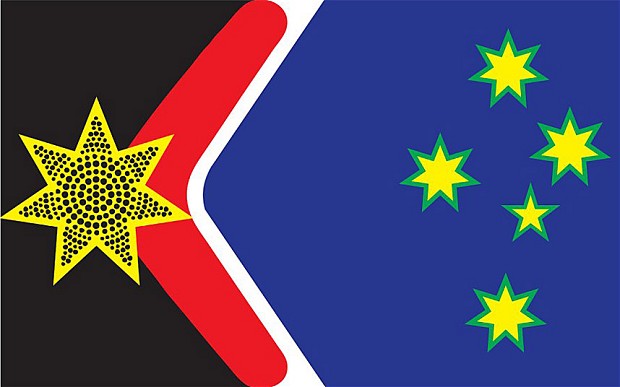Anyone who comes to my office will know that I have Myanmar’s “new” flag on the wall. It’s just a small one, alongside maps, calendars, posters and the usual memorabilia of academic life.
For all its martial certainty, I quite like Myanmar’s flag and the striking shape it offers when fluttering in the wind. The first time I really saw it on show was early in 2011 at a Manau festival in Myitkyina, Kachin State. High above the swaying masses of festive dancers it was a colourful reminder of who, ultimately, was in-charge.
Last month, those of us who live in Canberra had a chance to see Myanmar’s flag flying side-by-side with its Australian counterpart (as pictured above). The flags marked the visit of Myanmar President Thein Sein, who I hope enjoyed the spectacle as he whizzed down the city’s boulevards. Those were big days for Australia-Myanmar relations.
Of course the only reason Thein Sein was welcomed to Canberra is that since changing the flag in October 2010 Myanmar’s rulers have unleashed a transformative project — one with economic, social, political, and, indeed, symbolic dimensions. Myanmar has changed and its new flag is supposed to help set a new tone.
But Myanmar is not the only country considering its need for new national symbols.
Back in January of this year my ANU colleague Dr John Blaxland proposed a new Australian flag, as pictured below. John’s proposal received plenty of media attention, including in The Australian and the UK’s Telegraph, and he organised a poll to determine whether there was support for a new flag, and his design in particular. It is a striking medley of different elements, melding aspects of the existing flag, and Australia’s vibrant aboriginal flag, in a novel shape and style. John’s description of what he is trying to achieve is available here. For what it’s worth — I like this proposed flag.
But what I like even more is the idea that such symbols are up for debate and discussion. My guess is that one day in the near future Myanmar’s current flag will be closely scrutinised; there are likely to be those who don’t feel it fully reflects their aspirations for the country. When it comes to that point I hope there will be a free public debate about Myanmar’s national symbols, and perhaps a vote to determine the people’s preference.
Flags are often considered sacred and thus eternal. But to my mind they are too important not to change.
 Facebook
Facebook  Twitter
Twitter  Soundcloud
Soundcloud  Youtube
Youtube  Rss
Rss 
